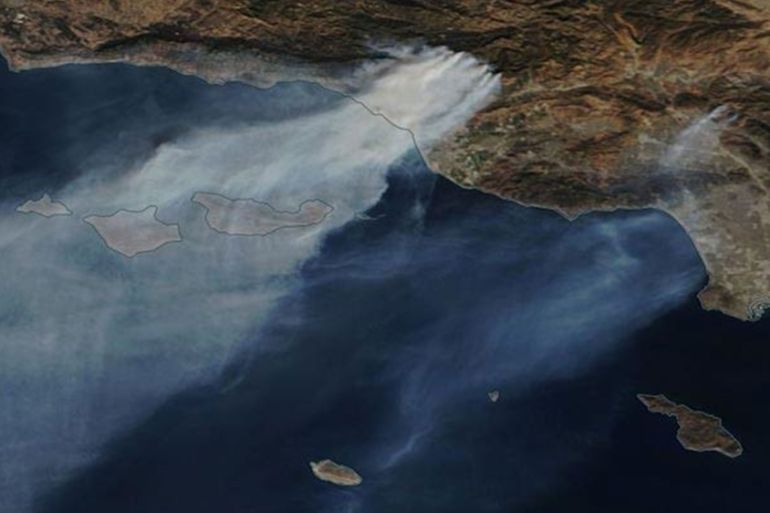Fierce winds drive Southern California’s fires
Santa Ana winds are common in December but this is an extreme example

The cause of Santa Ana winds in California is well understood and a good explanation is posted on the US National Weather Service website.
These winds are at their most prevalent during December and on average, last about a day and a half. They tend to be strongest at night.
This outbreak is different to the norm in that it has already lasted longer than average and is likely to be strongest during daytime Thursday.
December may be the month for Santa Ana winds but it is not normally the month of fires because:
1. Outdoor activities are fewer, reducing the risk of accidental ignition by humans.
2. Rainfall normally increases into the winter, the average catch in Los Angeles for October is 17mm, for November 26mm and for December 59mm.
This year has been much drier, downtown Los Angeles has recorded just 3mm of rain since October 1, the 11th driest start to the “wet season” in 141 years of records. This means that vegetation is dry. The Santa Ana wind is a drying wind and on Thursday, relative humidity values below 10 percent are expected.
To give a perspective, a comfortable day in the 20s Celcius would be at about 50 percent.
The National Weather Service is predicting gusts of 80 kilometres per hour at lower elevations and as high as 120 km/h across hillsides for up to 24 hours, an unusually long interval for Santa Ana winds of that strength.
Air quality has already worsened in Ventura and Santa Barbara, downstream of the fires, to “unhealthy”. Spikes to “hazardous” showed as early as Tuesday in Ventura.
For the first time ever, conditions have prompted a “purple warning”, one above red, for fire in this part of Southern California. The warning of “extremely critical” fire risk conditions stretches from the Mexican border, up the coastal conurbation to Santa Maria.
The winds will slowly decline from Friday but conditions remain critical for fire risk until at least Sunday.
The Union of Concerned Scientists said: “As temperatures rise in the western US, wildfires are increasing, wildfire season is getting longer, and costs are soaring.
“Higher spring and summer temperatures and earlier spring snow-melt result in forests that are hotter and drier for longer periods of time, priming conditions for wildfires to ignite and spread.
“The wildfire season has grown from five months, on average, in the 1970s to seven months today, and the annual number of large wildfires has increased by more than 75 percent over the same time period.”